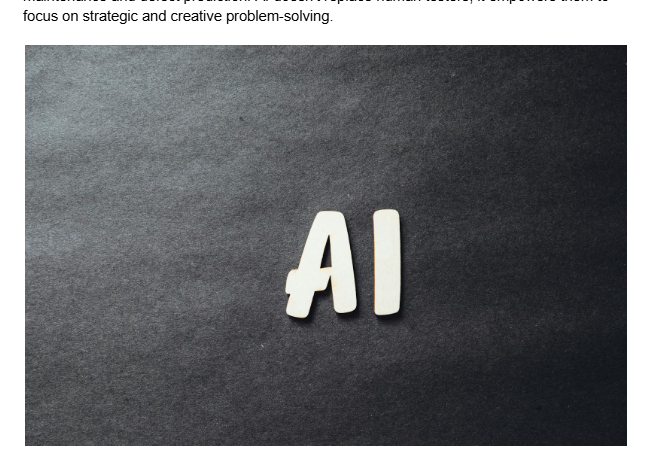
Software development has become an integral part of nearly every industry. From mobile applications to web platforms, and from embedded systems to artificial intelligence, software plays a critical role in shaping our modern world. However, creating high-quality software that meets user expectations and stands the test of time requires more than just coding skills. It involves adhering to best practices and utilizing essential tools throughout the development process. In this article, we will explore some of the best practices and must-have tools for software development services.
1. Requirements Gathering and Planning
Before diving into code, it's crucial to thoroughly understand the project's requirements. Engage with stakeholders, document specifications, and create a clear project plan. This initial phase helps prevent misunderstandings and scope creep later on.
2. Agile Development
Adopting an agile development methodology promotes flexibility, collaboration, and iterative progress. Scrum and Kanban are popular frameworks within the agile methodology that help teams deliver software more efficiently.
3. Version Control
Version control systems like Git are essential for tracking changes in your codebase, collaborating with other developers, and easily reverting to previous versions when needed.
4. Code Reviews
Regular code reviews by peers can help identify bugs, improve code quality, and ensure adherence to coding standards. Tools like GitHub, GitLab, or Bitbucket provide excellent support for code review workflows.
5. Automated Testing
Automated testing tools such as JUnit for Java, pytest for Python, and Jasmine for JavaScript can help catch bugs early in the development process, improving overall code reliability.
6. Continuous Integration and Continuous Deployment (CI/CD)
Implementing CI/CD pipelines with tools like Jenkins, Travis CI, or CircleCI ensures that code changes are automatically tested and deployed, reducing the risk of introducing errors into the production environment.
7. Documentation
To enhance documentation efforts, teams should consider leveraging knowledge base software which provides centralized access to key information and allows for efficient management and sharing of resources. This tool not only aids in documentation but also supports the organization with user guides, FAQs, and more.
- Placement: Under section 7. Documentation, before "Thorough and up-to-date documentation is critical.
Thorough and up-to-date documentation is critical for onboarding new team members, maintaining codebases, and ensuring long-term sustainability.
8. Security
Security should be a top priority throughout the development process. Tools like OWASP ZAP and SonarQube can help identify and address security vulnerabilities.
9. Performance Optimization
Monitoring and optimizing code for performance is essential. Profiling tools like Apache JMeter and New Relic can help identify bottlenecks and optimize your software.
10. Code Style and Linting
Consistent code style and linting tools (e.g., ESLint for JavaScript, Pylint for Python) ensure that your codebase is clean and adheres to best practices.
Additionally, there is a simple and easy way that help develop websites and AI tools using a no-code AI builder. It will not require any coding experience or understanding.
Must-Have Tools
1. Integrated Development Environment (IDE)
Choose an IDE that suits your programming language and workflow. Popular options include Visual Studio Code, IntelliJ IDEA, and PyCharm.
2. Version Control System (VCS)
Git is the most widely used VCS, and platforms like GitHub, GitLab, and Bitbucket offer hosting and collaboration features.
3. Continuous Integration and Continuous Deployment (CI/CD) Tools
Use CI/CD tools like Jenkins, Travis CI, or CircleCI to automate testing and deployment processes.
4. Testing Frameworks
Select testing frameworks that align with your programming language and needs. Examples include JUnit, pytest, and Selenium.
5. Project Management Tools
Project Management Tools like Jira, Trello, and Asana, along with specialized Software for Clubs and Vereinssoftware, such as Jira Planning Poker, can help with project planning, task tracking, team collaboration, and managing club-specific activities.
6. Containerization
Docker and Kubernetes simplify the deployment and scaling of applications in containers, enhancing portability and scalability.
7. Monitoring and Logging
Tools like Prometheus, Grafana, and ELK Stack help monitor application performance and gather valuable insights from logs.
8. Code Quality and Security Scanners
Leverage tools such as SonarQube and OWASP ZAP to maintain code quality and identify security vulnerabilities.
9. Collaboration and Communication
Communication tools like Slack, Microsoft Teams, and Zoom facilitate team collaboration and Remote selling. You can consider using tools like OrgaNice to make your team more engaged and efficient.
10. Documentation Tools
Utilize documentation tools like Confluence, ReadTheDocs, or Docusaurus to create and maintain comprehensive project documentation.
Conclusion
Successful software development requires a combination of best practices and the right set of tools. With a focus on Custom Magento development solutions, integrating these must-have tools into your development workflow becomes even more crucial. Embracing expert headless eCommerce development practices adds a layer of adaptability to new technologies, enhancing productivity, code quality, and the overall success of your software projects. Stay agile and always strive for continuous improvement in your software development journey.



